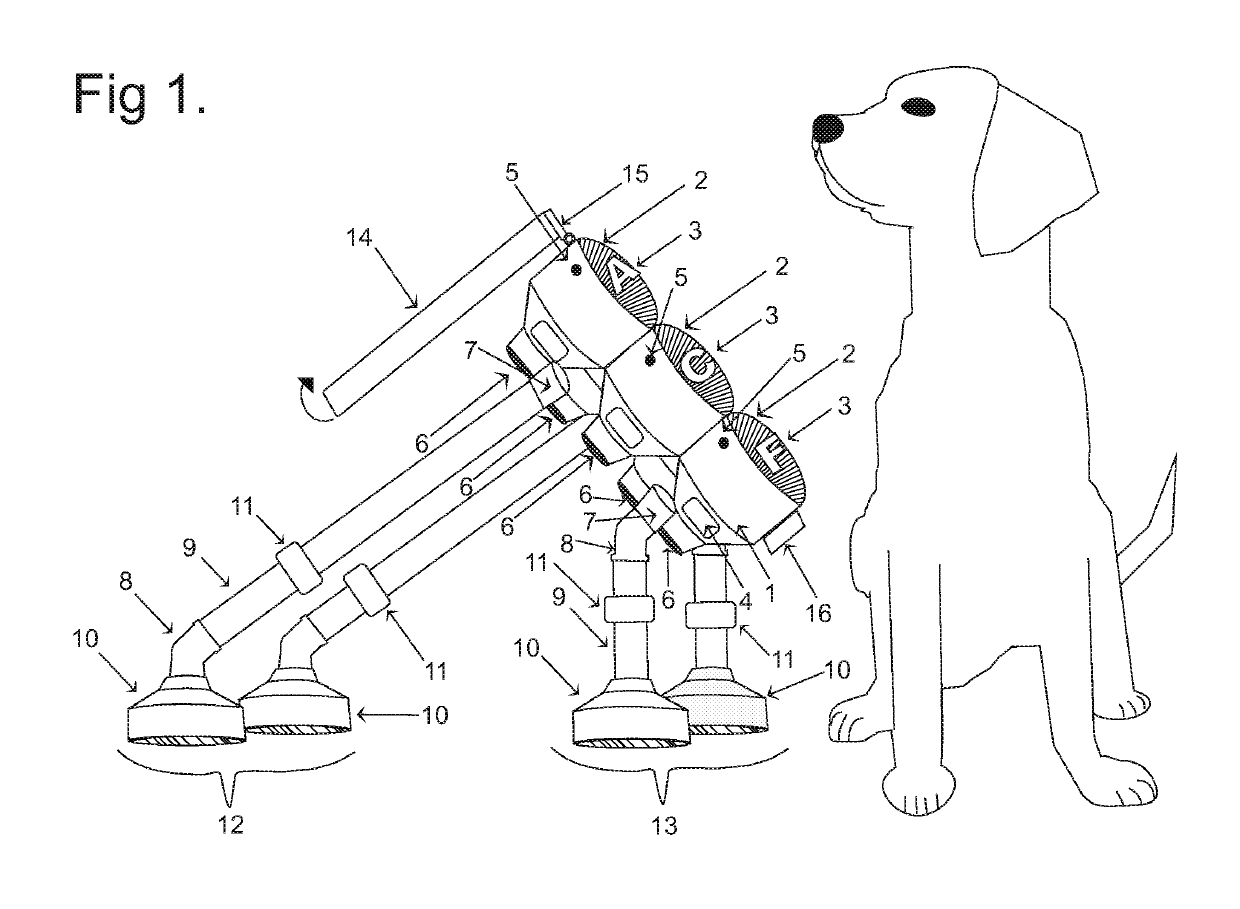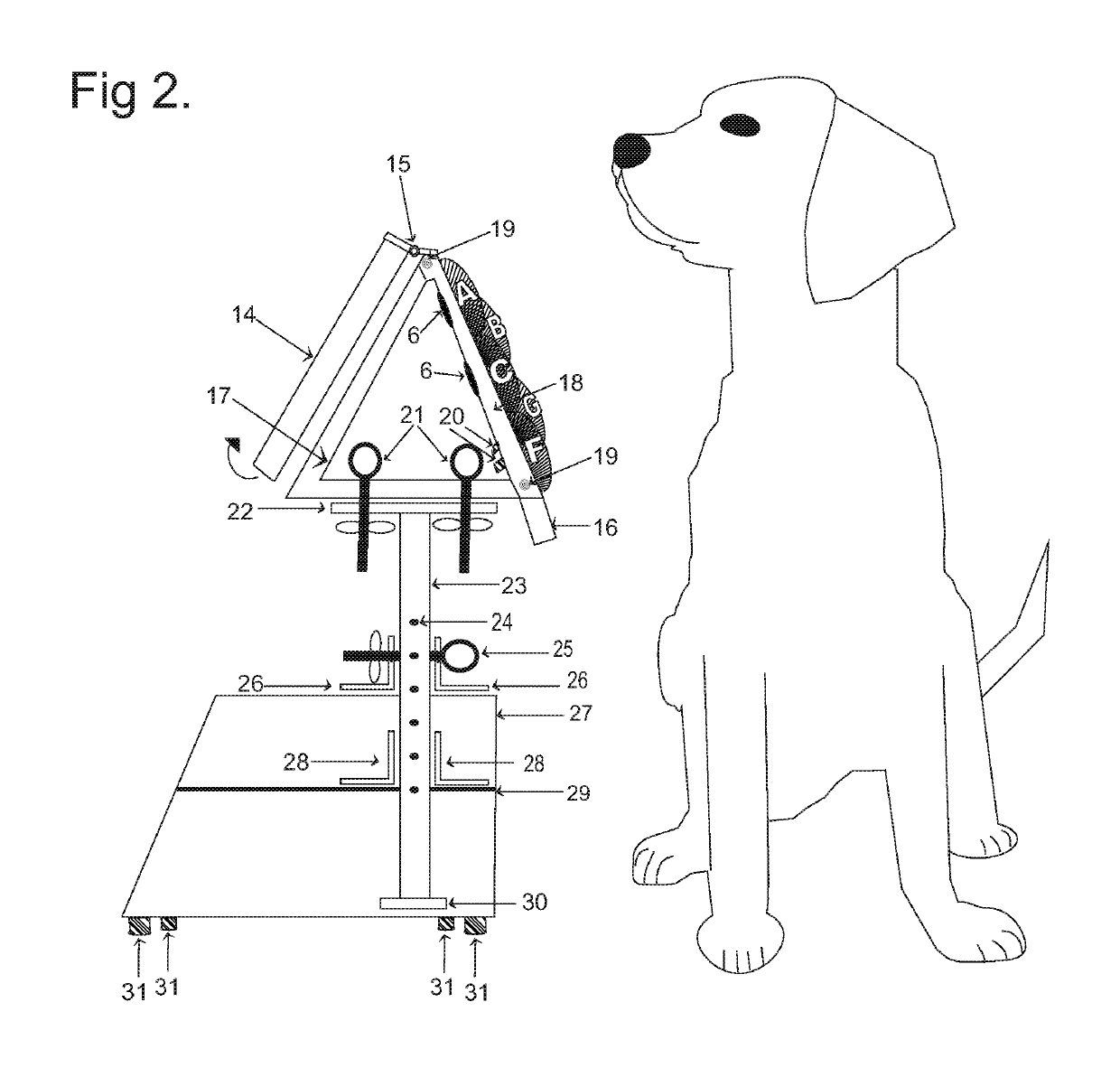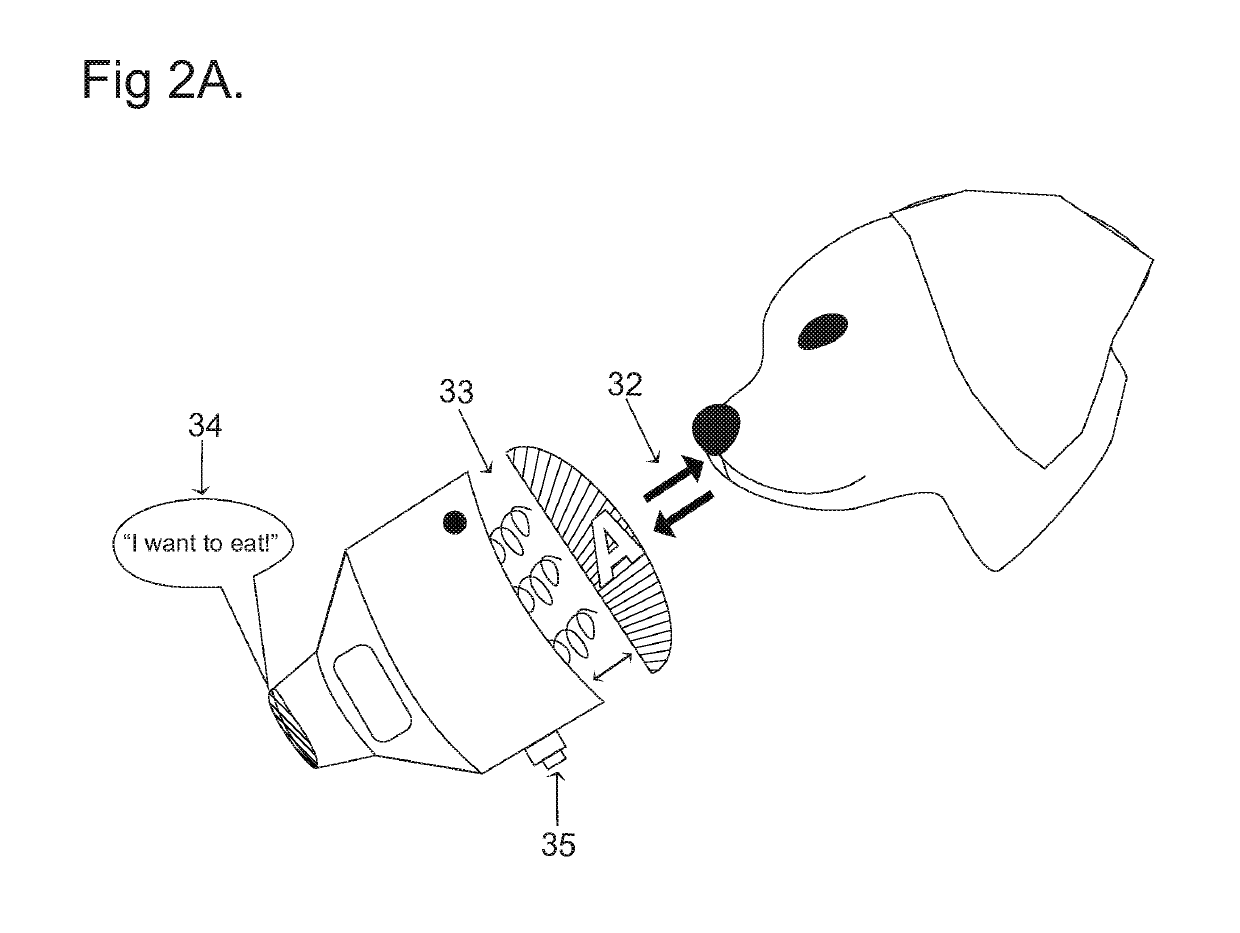Functional communication lexigram device and training method for animal and human
a communication device and human-type technology, applied in the field of animal training, communication devices, and devices and methods for exercise and amusement of animals, can solve the problems of many devices having limited scope and functionality, numerous design limitations, and/or disadvantages, and relying on non-training non-behavioral phenomena, etc., to achieve greater accuracy and control on the part of the animal
- Summary
- Abstract
- Description
- Claims
- Application Information
AI Technical Summary
Benefits of technology
Problems solved by technology
Method used
Image
Examples
embodiment
Preferred Embodiment
[0028]FIG. 1 of Attachment A shows the preferred embodiment of a plurality of design options for the functional communication lexigram device which could be fashioned from any sufficiently rigid material (various prototypes have been constructed of wood, PVC pipe fittings, and rigid foam). FIG. 1 is a side view and outlines examples of the display panel button casing sitting at an upright angle (see 1), the button-like modalities that could be a computer touch screen or mechanically activated (see 2), the position of and visual-tactile discriminative stimuli affixed to each button (see 3), an area to insert batteries (see 4), a switch to record the auditory sound, message or other detectable cue (see 5), a speaker area where the auditory message or sound escapes (see 6), pegs to connect and disconnect legs (see 7), 90-degree joints that connect to the pegs or footers so that the legs are vertical (see 8), pipe-like leg extensions (see 9), wide footers to ensure t...
PUM
 Login to View More
Login to View More Abstract
Description
Claims
Application Information
 Login to View More
Login to View More - R&D
- Intellectual Property
- Life Sciences
- Materials
- Tech Scout
- Unparalleled Data Quality
- Higher Quality Content
- 60% Fewer Hallucinations
Browse by: Latest US Patents, China's latest patents, Technical Efficacy Thesaurus, Application Domain, Technology Topic, Popular Technical Reports.
© 2025 PatSnap. All rights reserved.Legal|Privacy policy|Modern Slavery Act Transparency Statement|Sitemap|About US| Contact US: help@patsnap.com



